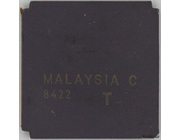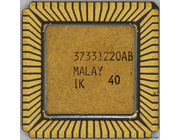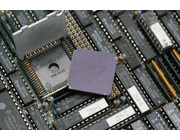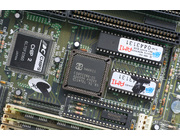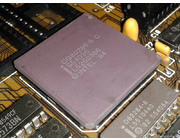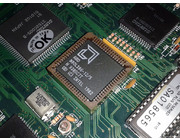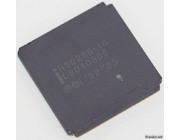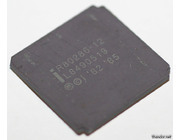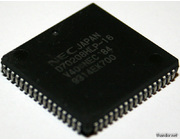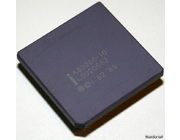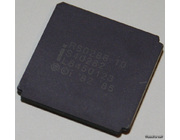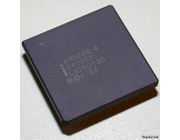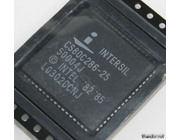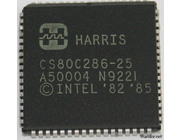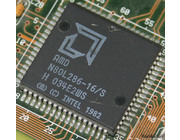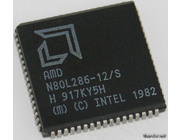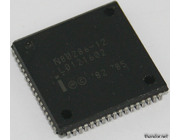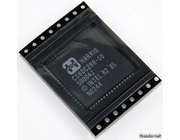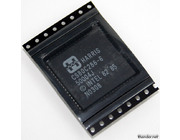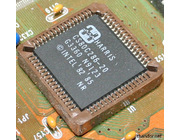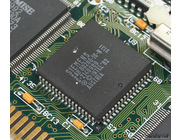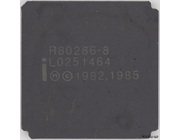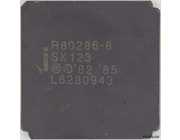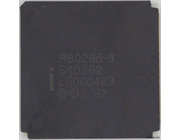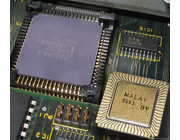Intel introduced the 286 on 1 February 1982 as successor of the 8086/8088. It was a lot faster than the 8086/8088 and features new memory management and protection (protected mode) abilities.
| Many versions of the 286 exist regarding clock frequencies and packaging (LGA, DIP, plastic, ceramic). The first versions ran at 6 and 8MHz and a faster 12MHz version followed after. Other manufactures (under license) like Harris made 20MHz and even 25MHz versions. The 286 can run in protected mode which enables up to 16MB of memory that can be addresed. Protected mode was new back then and not used much. Because the 286 could not go back to real-mode after it went into protected mode, developers did not use the protected mode on the 286. The only way to revert to real-mode was to reboot the whole system. A 'fully' working protected mode (read: reverting on-the-fly) was available in the 386. On the right you see an image of the 286-die. This is how the 286 looks like under a microscope. | 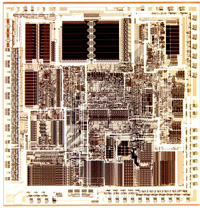 |
